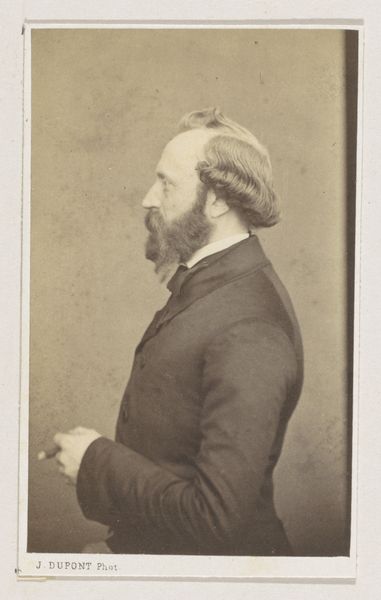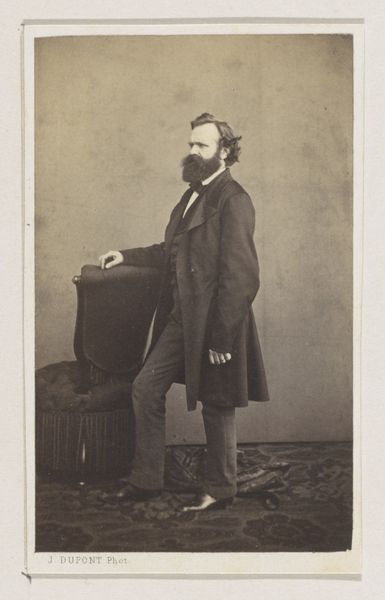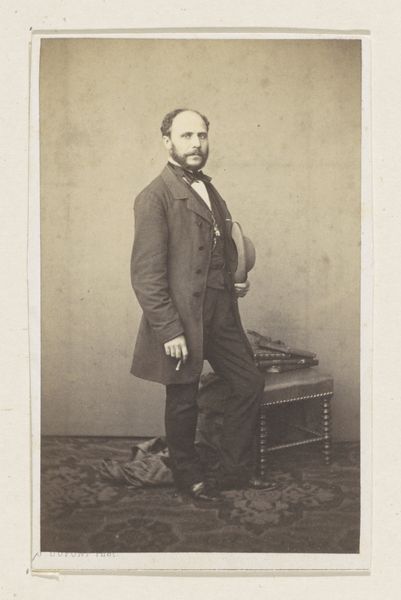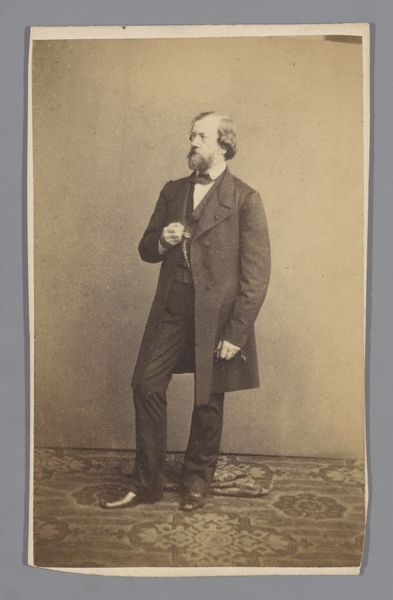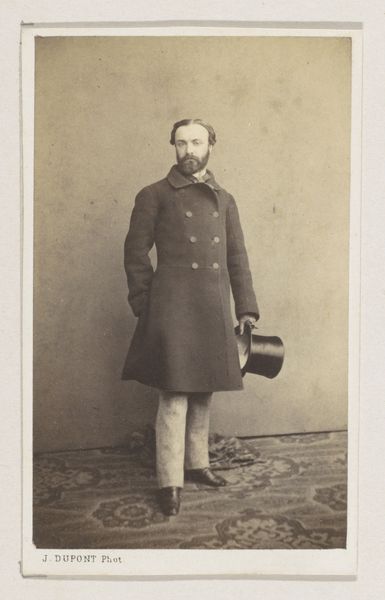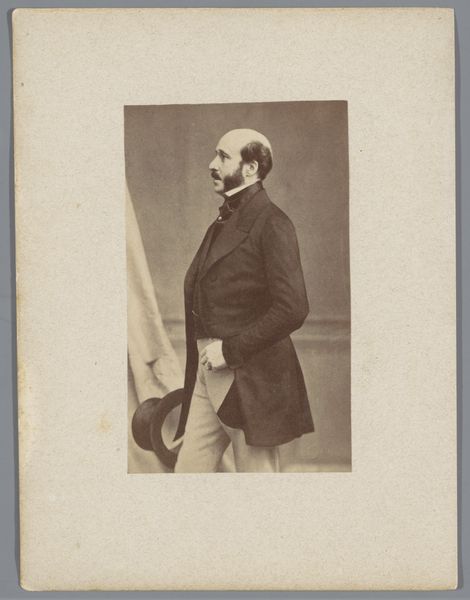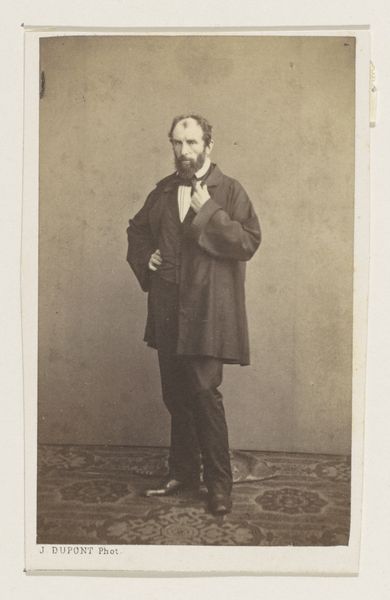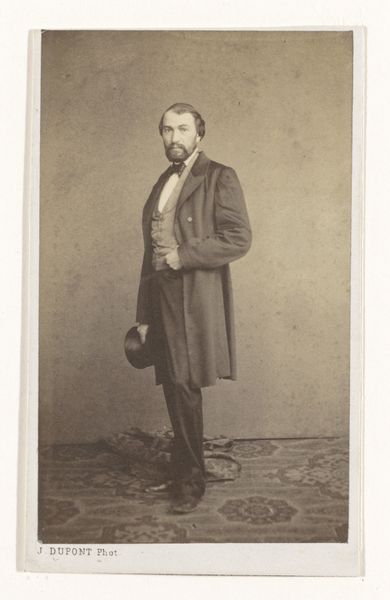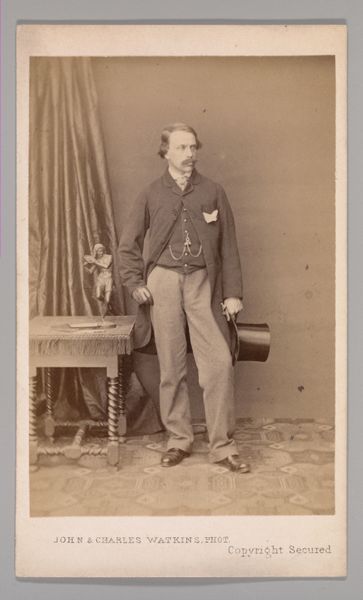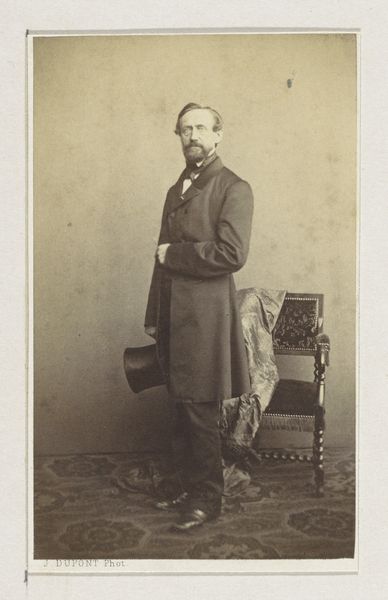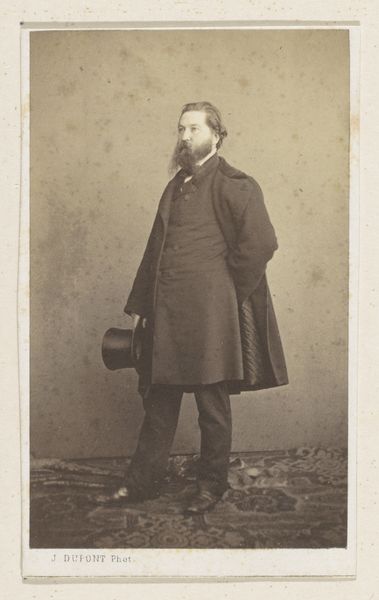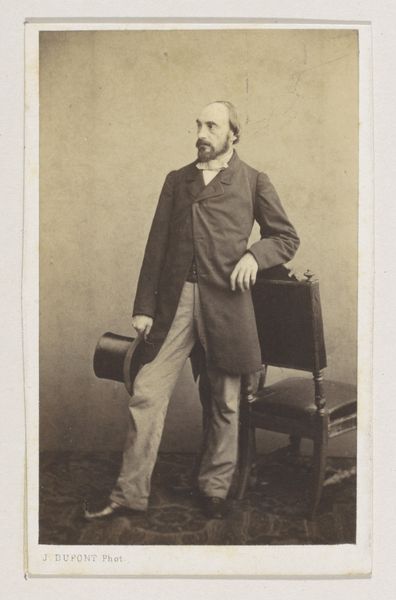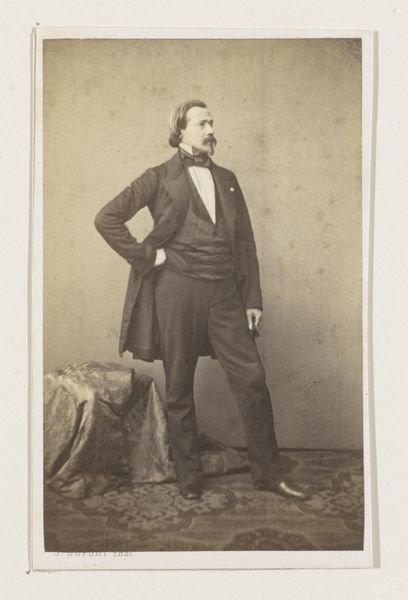
photography
#
portrait
#
photography
#
realism
Dimensions: height 101 mm, width 62 mm
Copyright: Rijks Museum: Open Domain
Curator: Immediately, this portrait gives off the vibe of a carefully composed stage play. All that sepia-toned formality! Editor: Indeed! We're looking at a photographic portrait titled "Portret van de schilder August de Wilde, ten voeten uit," which translates to "Portrait of the Painter August de Wilde, full-length." It was captured in 1861 by Joseph Dupont. The choice of photography as the medium during this time already suggests interesting avenues of material production to be considered. Curator: Absolutely! He is giving us this very intense look—not directly engaging, almost pensive, lost in his creative zone perhaps. It really has that late Romantic-era feel; maybe even pre-Raphaelite with its detail, no? Editor: The material details definitely place it in that mid-19th-century moment. You see, even something like posing someone “full-length” involved certain industrial and economic practices. Consider the cloth used to manufacture the clothing, the chemicals needed to develop the photograph, the societal demands and rising market for such realistic portraits for both personal and promotional gains of the bourgeois... Curator: It does also hint at this broader question of the role of the artist—almost performative. And his beard, meticulously shaped... like a deliberate signifier, no? A material declaration. Editor: Absolutely, the rise of artists also becomes intimately interwoven with their visual representation in society through forms like this photographic technology, especially if you note how artisanal labor converges within professional studio environments with specialized division of labor. Photography transformed visibility. Curator: The more I look, the more it reveals. The composition isn't static—it’s about revealing a moment, his identity—or, rather, his curated artistic self. I guess, more accurately, this is Joseph Dupont capturing another artist engaged in a similar kind of process! It’s a lovely paradox. Editor: A beautiful cycle in the materialization of images and the social currency that photographic realism offered artists seeking to claim their place, right? Thank you for lending your artistic eye to the process!
Comments
No comments
Be the first to comment and join the conversation on the ultimate creative platform.
